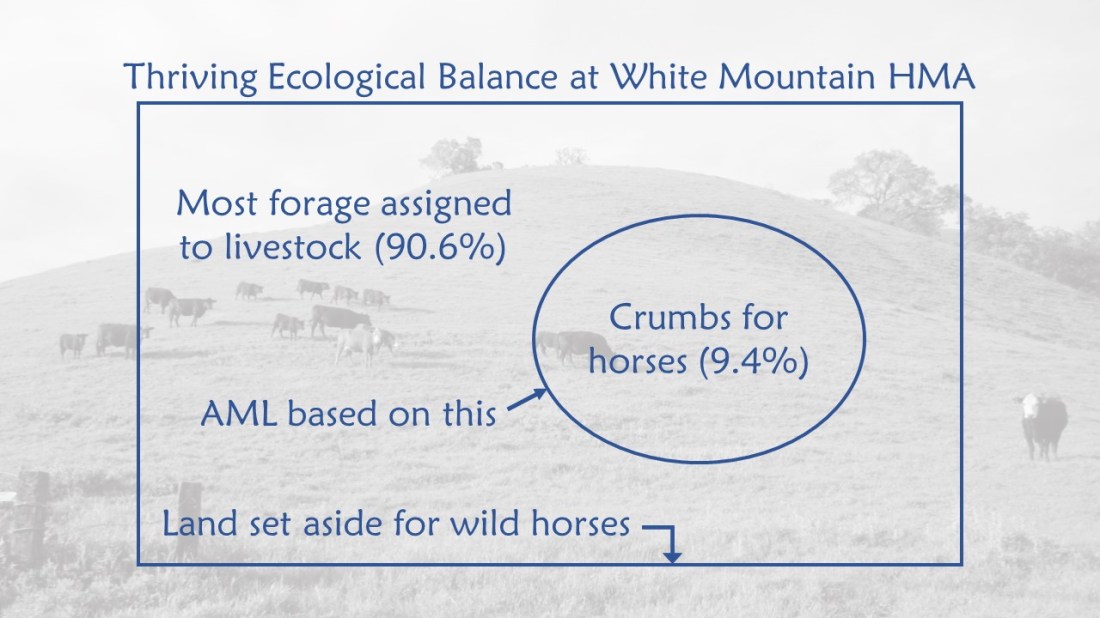The Tier 1 analysis in Appendix A of the draft EIS for the Rock Springs RMP amendment provides data for current conditions at White Mountain HMA.
The HMA is to be managed principally for wild horses per paragraph 1332(c) of the statute, but do the numbers reflect that?
The EIS did not provide allotment sizes, grazing seasons and the type of animals allowed on the HMA. The grazing season on some of the allotments is three months, according to Section 3.10 of the EIS, and on others it’s four to six months, so an average grazing season of four months was assumed.

Forage requirements and stocking rates for livestock were computed for cow/calf pairs, whose resource requirements are said to be equivalent to those of wild horses, allowing a side-by-side comparison. The grazing permits may allow other animals.
The results are presented in the following charts.

The horses have a much smaller footprint and environmental impact than livestock, but under the RMP amendment, the HMA will be eliminated and the land will be managed exclusively for livestock.
The government will pay between $500 and $1,000 to remove and process each horse from the area, plus another $730 per year to hold him in an off-range pasture, so it can collect $16 per year from the public-lands rancher to whom his food is sold.
It’s crazy. Nobody in the private sector would do that.
RELATED: Salt Wells Horses Get Short End of Stick, Rock Springs EIS Posted, So Long, Pilot Butte Wild Horse Scenic Loop?

